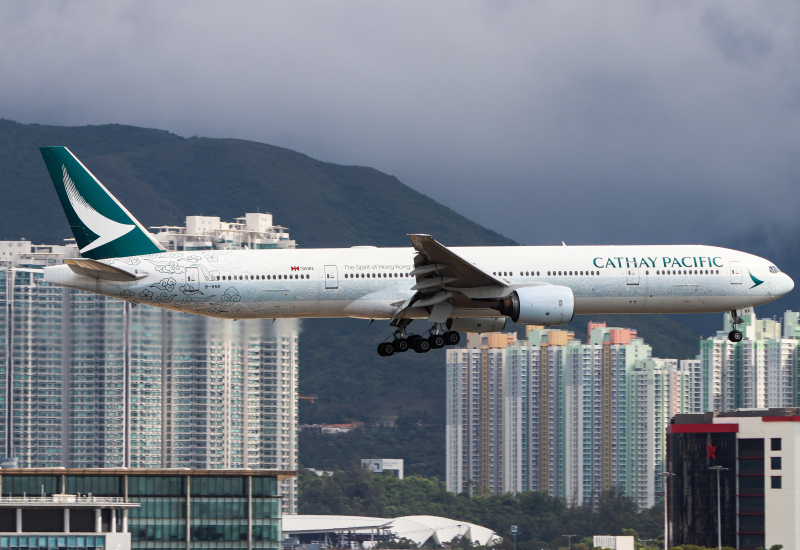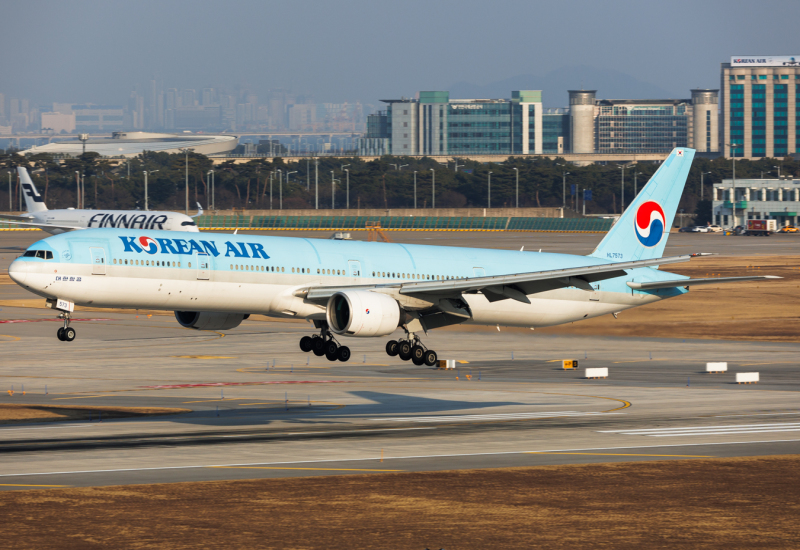Since its maiden flight in 2003, the Boeing 777-300ER (ER for "extended range") has become the best-selling variant of the Boeing 777 family. As of 2020, over 830 777-300ERs had been delivered to operators all around the world.
Why is this? What made the 777-300ER so successful?
Best of Both Worlds
The success of the 777-300ER can be mainly attributed to the aircraft being "the best of both worlds".
The 777-300ER combined the 777-200ER's impressive range and the 777-300's increased capacity. This meant that airlines could fly more passengers farther. In other words, it would be easier for airlines to make more money on prime long-haul routes.

It was this fantastic combination that contributed to the 777-300ER's quick success. Its large number of sales contributed to the 777 family topping the 747 as Boeing's most profitable jetliner.
When the 777-200ER entered service in 1997, the aircraft offered 8,130 miles (7,065 nautical miles) of range. The 777-300ER offered a slightly longer 8,480-mile (7,370 nautical mile) range.
The 777-300 (non-ER) also entered service in 1997 as simply a stretched version of the 777-200. The fuselage was 20% longer allowing a maximum configuration of 550 passengers in an all-economy layout. Boeing mainly marketed this aircraft toward high-density markets such as in Southeast Asia. Sure enough, that is where the 777-300 continues to thrive primarily: with Cathay Pacific.

One of the main ideas behind the 777-300ER was to fly more passengers further. Therefore, Boeing never conjured an all-economy 777-300ER as they did with the non-ER variant. Boeing marketed the 777-300ER as having an example configuration of 396 passengers in a two-class configuration.
Improved Performance
Being a newer aircraft than other 777 variants, the 777-300ER also offered various improvements with regard to the passenger experience.
The cabin of the 777-300ER boasted larger overhead bins that offered passengers more flexible options to store their luggage. Furthermore, the aircraft was fitted with improved lighting; mood light settings could make the cabin environment appear more welcoming and relaxing for passengers.
The cabin was also slightly wider than previous 777 variants, allowing for more seat width and legroom. The aircraft had newer inflight entertainment systems including larger screens and WiFi connectivity that contributed to the modern feel.
In the exterior, larger and stronger engines were fitted to the -300ER — specifically, the General Electric GE90-115B. These engines are the most powerful ever fitted to a commercial airline with a maximum thrust of 115,000 pounds-force (510 kN). These powerhouses allow the 777-300ER to easily achieve efficient operations over an already extended range.

The 777-300ER has an extended wingspan compared to the -200/-200ER and -300. Its wingspan is 212 feet and features raked wingtips. Raked wingtips allow for reduced drag and further contribute to efficient operations. These wingtips were later introduced on the 777-200LR which entered service in 2006.
While Boeing ended official production of the 777-300ER in 2021, the aircraft continues to be an integral asset to airline operations worldwide. Airlines continue to depend on the aircraft for launching new long-haul routes and will likely continue to do so with the 777X being continuously delayed.
Emirates, British Airways, Qatar Airways, and Cathay Pacific are just some of the many airlines that can attribute their international successes to the 777-300ER. While older 777-300ER examples are gradually phasing out in favor of newer planes, it goes without saying that the plane will continue serving an important role in airline fleets for decades to come.
Maldivian Airlines Introduces First-Ever Widebody Aircraft, Plans New China Flights » Could You Survive a Plane Crash? The Unlikely Science of Plane Crash Survival » Emirates Dismisses Viral A330 Plane Crash Video as "Fabricated and Untrue" »
Comments (2)


Add Your Comment
SHARE
TAGS
INFORMATIONAL Boeing 777 Boeing 777 777-300 777-300ER Boeing 777-300ER AnalysisRECENTLY PUBLISHED
 Could You Survive a Plane Crash? The Unlikely Science of Plane Crash Survival
With air travel consistently being heralded as the safest form of public transport, most of us do not board a plane pondering our chances of survival in the event of a crash. But, is it possible to survive one?
INFORMATIONAL
READ MORE »
Could You Survive a Plane Crash? The Unlikely Science of Plane Crash Survival
With air travel consistently being heralded as the safest form of public transport, most of us do not board a plane pondering our chances of survival in the event of a crash. But, is it possible to survive one?
INFORMATIONAL
READ MORE »
 Maldivian Airlines Introduces First-Ever Widebody Aircraft, Plans New China Flights
Maldivian, the government-owned national airline of the Maldives, has just welcomed its first-ever wide body aircraft: the Airbus A330-200. With the new aircraft, the carrier also plans brand-new long haul international flights to China.
NEWS
READ MORE »
Maldivian Airlines Introduces First-Ever Widebody Aircraft, Plans New China Flights
Maldivian, the government-owned national airline of the Maldives, has just welcomed its first-ever wide body aircraft: the Airbus A330-200. With the new aircraft, the carrier also plans brand-new long haul international flights to China.
NEWS
READ MORE »
 Thousands of Flights Impacted as Winter Storm Blair Hits U.S.
Winter Storm Blair has unleashed a huge blast of snow, ice, and freezing temperatures across the Central and Eastern United States.
As of Sunday afternoon, over 6,700 flights and counting have been disrupted. This includes cancelations and significant delays leaving passengers scrambling to change flights and adjust travel plans.
NEWS
READ MORE »
Thousands of Flights Impacted as Winter Storm Blair Hits U.S.
Winter Storm Blair has unleashed a huge blast of snow, ice, and freezing temperatures across the Central and Eastern United States.
As of Sunday afternoon, over 6,700 flights and counting have been disrupted. This includes cancelations and significant delays leaving passengers scrambling to change flights and adjust travel plans.
NEWS
READ MORE »





